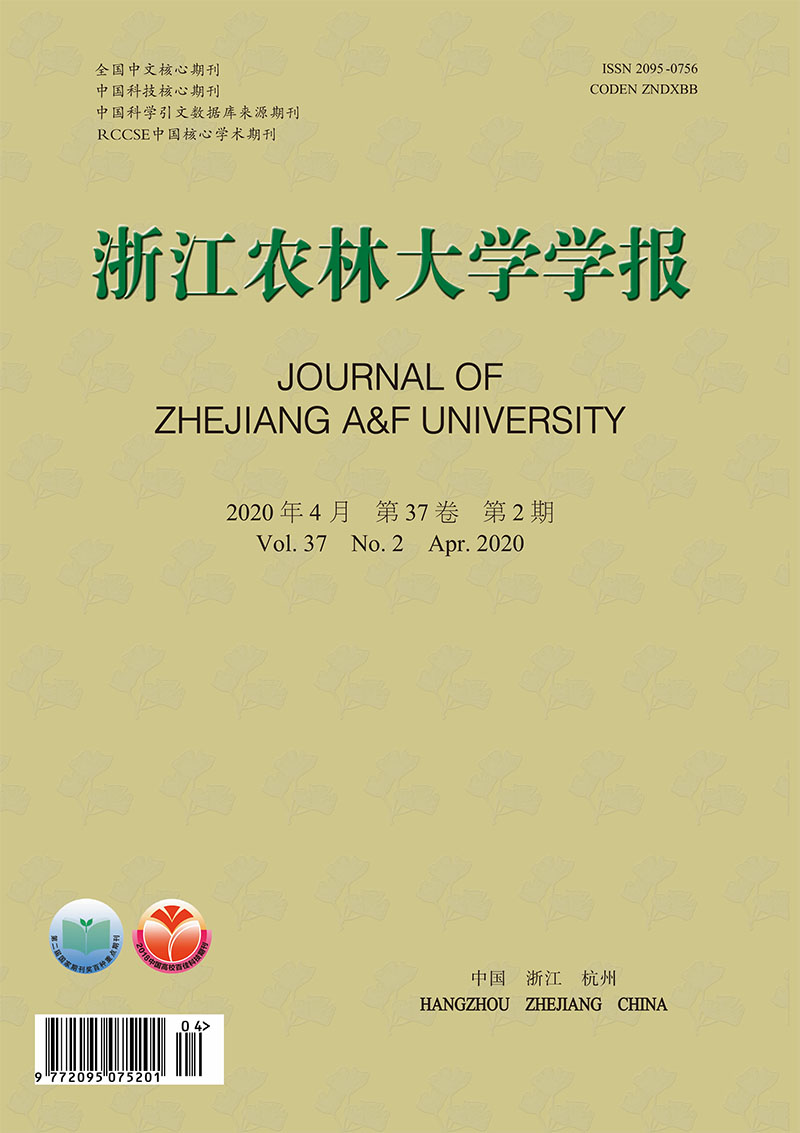-
种子活力(seed vigor)是判定种子质量的重要依据,与农、林、园艺等生产息息相关,对农林业发展具有重要意义[1]。19世纪的德国种子检查方法中已经有发芽速度、发芽速力、发芽力、生长力、种子大小等表示种子活力高低的检测项目。1950年,国际种子检验协会(International Seed Testing Association, ISTA)和北美官方种子分析家协会(North American Association of Official Seed Analysts, AOSA)组织成立了ISTA活力测定委员和AOSA活力委员会,这两大委员会负责总结全世界国家的种子活力测定成果。1980年发行的《种子活力测定方法手册》概述了低温测定方法、电导率测定等8种种子活力测定方法[2]。1982年中国学者[3]开始了种子活力的探索,通过发芽生理法测定白菜Brassica pekinensis、菜豆Phaseolus vulgaris、萝卜 Raphanus sativus等种子的活力。1996年,通过电导率等多项指标对湿地种子进行活力探测[4]。2001年第1次将机器视觉技术[5]引入农作物种子质量检验中,开启了无损检测的尝试。在之后的10 a里,种子活力检测研究逐步引入激光散斑技术、超微弱发光法、高光谱成像技术、电导法检测技术、电子鼻探测技术等新型技术。这些检测方法具有操作简单、检测速度快、准确率高和无损等优势,随着种子检测技术领域的不断拓展,将成为种子活力测定的新方向。
HTML
-
种子活力反映的是种子在田间条件下的出苗率和出苗时间,因此无损检测方法都应基于种子活力相关的某种特性检测从而间接获得种子的活力值。总结起来,有基于光学特性、生理生化特性和外观特性的3类种子活力无损检测方法。其中,基于光学特性的无损检测方法包括近红外光谱检测技术、高光谱检测技术、激光散斑技术、叶绿素荧光检测技术及激光检测技术;基于生理生化特性的无损检测技术有电子鼻检测技术、电导法检测技术、过氧化氢(H2O2)流速检测技术以及可调谐半导体激光吸收光谱(tunable diode laser absorption spectroscopy,TDLAS)检测技术;基于种子外观特性的检测技术主要是机器视觉检测技术。
-
当光辐射到种子时,种子会以表面反射和本体反射等能量形式转移,并且种子在辐射不同强度和密集度的光之后所展现的特性也不同。利用种子对光的吸收特性,将种子的光学特性与内部活力指标建立关联,可以利用该关联对种子活力进行判别。
-
近红外光谱技术(near infrared spectroscopy,NIR)[6]的原理是近红外光(波长780~2 526 nm)激发有机物的官能团,有机物组成的分子吸收近红外光对应部分的能量,从稳定的基态跃迁到不稳定的激发态。不同的分子因具有特定的振动频率,从而吸收的能量是特定的,所以可以生成特有的近红外吸收光谱。利用此技术可以研究有机物中含氢基团(O—H,N—H,C—H,S—H和P—H)对近红外光谱的吸收特性,可对种子活力开展定性和定量分析,并且该方法具有无损、成本低、无污染、速度快、不破坏样品、测量方便等特点。
ALAMERY等[7]第1次通过创建偏最小二乘(PLS)预测模型来对种子活力等级进行分类,创建的二分类预测模型能够识别低和中、高活力种子群,正确率分别为80%~100%和96.3%~96.6%,证明了近红外光谱技术对种子无损检测的可行性。尹淑欣等[8]采用矢量归一化和主成分分析法对近红外光谱技术获得的数据进行预处理,去除数据噪声并降维,利用BP神经网络构建的模型对单粒玉米Zea mays种子进行识别,准确率达90.30%,识别时间仅需27.36 ms[9]。时伟芳等[10]测得春小麦Triticum aestivum单粒种子二面平均光谱数据,通过最小二乘法建立定性的模型,测单粒小麦种子的活力,准确率最优达91.3%。白京等[11]基于近红外光谱技术测得玉米种子的数据,采用多项式平滑预处理(SG)曲线减小噪声,应用支持向量机(SVM)构建判别模型获得种子有无活力的判别正确率达95.56%。李武等[12]将近红外光谱技术与竞争性自适应重加权法(CARS),无信息变量消除(UVE)和前向间隔偏最小二乘法(FiPLS)等3种方法相结合,筛选出最佳建模波段,利用偏最小二乘法回归(NISR)建立甜玉米种子活力相关指标的预测模型,实现了采集一次光谱测定3个参数,提高了种子无损检测的效率。在实际生产应用中发现:该方法容易受其他因素的干扰,其中水份的干扰最为明显,也最为常见。
-
高光谱成像技术(hyperspectral imaging technology)通过线阵扫面获取种子样本的空间信息和光谱信息,具有超多波段、光谱高分辨率和图谱合一的特点。与近红外光谱检测技术测定在近红外波长范围内种子的吸收值不同,高光谱成像技术借助成像光谱仪,可在紫外、可见光、近红外和中红外等区域测定,可获取数以百计波段,间隔非常小且光谱连续的光谱数据[13]。光谱中的每个像元均对应一条连续的光谱,能够反映某一个点所代表的信息。该方法不仅拥有近红外光谱检测技术的高分辨率,还能通过直观的图像更加全面地了解样本内部组成信息,通过测定的光谱数据可以无损检测种子的相关活力[14]。
李美凌等[15]通过高光谱成像仪采集了水稻Oryza sativa‘滇杂31’(粳型三系杂交稻)、‘荣优225’(籼型三系杂交稻)和‘珍珠糯’(籼型常规稻)等3个品种共564粒种子的高光谱数据,并将获取光谱数据后的水稻种子进行标准发芽实验,得到了种子活力数据。基于主成分提取光谱波段,建立基于SVM的2个活力梯度的预测模型,94.44%的分类鉴别率初步论证了基于高光谱的杂交稻与常规稻种子活力检测的可行性,并且表明波段选择对模型的优化是有效的。许思等[16]选取22个杂交水稻品种共5 280粒水稻种子为实验材料,通过人工老化处理得到3个活力梯度,实验所有品种的研究结果都表明:基于高光谱成像技术的种子活力等级进行快速无损检测普遍适用于杂交水稻,检测准确率可以达90%以上。吴小芬等[17]研究了基于高光谱的常规种子活力检测,选取2个不同的常规水稻品种(‘甬籼69’和‘中早39’)为研究对象,选取了8 889粒样本,老化处理获得3个活力梯度。结果表明:对种子的发芽率、简易活力指数和苗长等活力参数的预测,所建立的几种预测模型均取得了较好的结果,最优达98.9%。彭彦昆等[18]利用连续投影算法(SPA)获得番茄 Lycopersicon esculentum种子的最优特征波长为713 nm,并借助统计学后得到的校正集和验证集的正确率分别为93.75%和90.48%。尤佳[19]采用偏最小二乘与迭代遗传算法协同(siPLS-GA)筛选光谱特征波长,对脱绒棉种用高光谱图像技术进行无损检测,测得的数据用主成分分析进行降维,创建判别分析和SVM模型,另用折交叉验证算法(K-CV)和粒子群优化算法(PSO)对SVM模型进行参数寻优,达89.7%的分类精度。LI等[20]对稻种获得的原始高光谱数据采用小波包进行预处理,对光谱数据进行协方差分析降维和主成分分析提取特征波段,论证了稻种活力通过最小二乘支持向量回归算法(LS-SVR)对其进行测定是可行的,且获得相关系数均超过95%的预测集和校正集。该系列研究在杂交稻、常规稻多个品种的上都获得了有效性验证,但同时也表明各品种种子均存在差异,需要对不同品种建立检测模型。
-
生物散斑是激光照射在种子表皮呈现颗粒结构,产生的这种颗粒状态被称作散斑现象。主观散斑是经过透镜成像形成的散斑,客观散斑则是在自由空间传播形成的散斑。种子散斑的变化反映种子内在活力的某些相关性质,因而能作为一种新型的种子无损检测技术[21-23]。
MOREIRA等[24]使用激光散斑技术采集玉米种子的散斑图像,基于测得的指标建立种子活力分析的基本法则。激光散斑技术有快速无损测定种子活力的潜质,但尚停留在实验室研究阶段。王凤鹏等[25]采用主观和客观激光散斑技术对大豆Glycine max种子进行无损检测,以图像的形式给出定性检测结果,并使用广义差分算法进行处理,实验结果验证了主观和客观激光散斑方法均可检测大豆活力。赵瑛琦等[26]对麻皮豌豆Pisum sativum种子运用激光散斑技术进行活力测定,部分散斑图像用时间对比分析法处理;同时结合栓皮栎Quercus variabilis种子实际发芽结果与散斑值变化曲线的对比分析结果,验证了激光散斑能快速无损检测栓皮栎种子活力。该研究进展验证了激光散斑技术可以快速无损地鉴别种子活力,但还需要克服不同品种的种子产生的实验结果差异性。
-
叶绿素荧光检测技术是当波长为650~730 nm的光束射在种子表皮上,种皮上的叶绿素将会以荧光和热的形式释放能量,通过对种皮上叶绿素释放的荧光信号进行测定可获得种子活力等级的相关信息。检测到种子表皮的荧光信号越小,叶绿素含量也越少,则证明该种子活力也越高。通过叶绿素荧光检测技术可对种子活力进行快速无损的检测,由于该方法只对叶绿素有特异性,减少了其他光信号噪声对荧光信号的影响,为该方法的普及应用打下了良好的基础。JALINK等[27-28]最先采用650~730 nm波长激光照射单粒甘蓝Brassica oleracea种皮,并根据种皮产生的叶绿素荧光信号对种子进行活力分级。证实叶绿素荧光信号大小与种子质量呈负相关,选取13%叶绿素荧光信号来判别种子活力,可使种子活力等级的分选正确率由90%提升到97%。由于种皮本身叶绿素含量较少,且随成熟度提高叶绿素含量会不断降低,导致检测的荧光信号差异性趋小,增加了监测难度。KENANOLO[29]将4个不同品种和阶段的辣椒Capsicum annuum种子采用美国Satake公司生产的叶绿素荧光技术种子分选机分级,依据叶绿素荧光信号分级后的种子活力显著增高。DELEURAN等[30]利用激光对单粒菠菜Spinacia oleracea种子进行叶绿素荧光检测过程中,发现叶绿素荧光信号分级更适合最终的种子分级,并且可以对每年至少20%要丢弃的小颗粒蔬菜种子进行检测和分选,将分选后的种子重新投入农业生产中。叶绿素荧光检测法属于高效无损的种子活力检测技术,但是在种子样本中叶绿素含量过高或者过低的情况下,最后获得的种子活力分级效果欠佳。
-
红外热成像技术[31]能够很好地反映种子表面的温度范围和分布的细微变化。利用种子新陈代谢产生的这种辐射性能的热场,红外热成像技术能观测到在可见光下无法用肉眼直接观察到的种子外形轮廓和表面热分布。种子表面各点的温度及其变化在显示屏上以灰度差和伪彩色的形式表现,从而获得种子表面温度高低与种子活力高低关系的重要指标。KRANNER等[32]通过蒙特卡罗模拟开发了“虚拟豌豆种子”的计算机模型,该模型可以有效预测吸水后豌豆种子相关活性值。软X-射线造影测定法的原理是利用重离子不能被有活力的种子吸收,而重离子能渗入失去活力的种子内部并对X-射线有强烈的吸收性能[3]。杨冬风[33]通过软X-射线下曝光造影钡盐处理过的种子,发现死伤组织呈明亮白色,反之为黑色。建立BP神经网络识别模型能有效检测软X-射线下曝光造影的图片,并且输出的种子活力判断结果达95%。生物的微弱发光(又称生物发光)是由生命体(细菌微生物、植物、动物、人等)光细胞或光细胞所组成的光器官产生[34]。生物产生的光子辐射极其微弱,一般在几到几千个光子之间。生物微弱发光能反映生物系统的氧化代谢等诸多生命活动。章华仙[35]采用BPCL仪测试不同时间光照下稻种的微弱发光实验,发现种子的微弱发光特性可以定性地判断出种子的新陈度。
-
种子在存储中会释放出一些羰基化合物(如醛类、酮类、醇类等),还有少量醇类和其他化合物的气体[36]。电子鼻是一种能够发现、识别和辨别气味的电子系统,其工作原理是模拟人的嗅觉器官。电子鼻一般由模式识别子系统、信号处理子系统和气敏传感器阵列等3大部分组成[37]。种子释放的痕量气体,可以被电子鼻快速识别,并分析测得的数据来识别种子活力。
伟利国等[38]研制了一套电子鼻检测系统能快速识别小麦活性。该系统由5个可以分别提取2个特征值气敏传感器组成,对测得的数据用归一化和平滑滤波进行处理,通过比较后采用PNN神经网络进行模式识别,训练样本的回判准确率为100%,测试样本网络识别正确率为91%。ZHANG等[39]利用电子鼻获取活力不同甜玉米种子的气味信息,将测取的气味信息进行主成分分析,获得各个气味成分的数据贡献率,并结合Loading分析主要差异性气体,建立Lib-SVM模型进行种子活力判别,后经回归模型验证发现:实验测得的种子活力准确率达96.67%。之后该课题组重新将SVM模型结合LDA和Loadings分析法,发现可以更好地鉴别和区分经过不同处理和老化程度后的小麦种子。但种子的品种、产地和年份等相关因素的变化可能会使种子气味发生变化,需要不断重复的建模来适应这种因素的变化,导致了工作量的增加。另外,气相色谱离子迁移谱技术兼具气相色谱和离子迁移谱技术的特点,拥有高分离能力的气相色谱以及高灵敏度的离子迁移谱,运用静态顶空进样法对种子挥发的痕量气体进行准确、无损检测,可为气相色谱离子迁移谱技术分选种子活力提供更多技术保障。
-
电导法是一种测定种子浸出液的电导率来判断种子活力高低的检测技术,其原理是利用种子在初期吸水膨胀时细胞膜会进行重建,完整重建细胞膜的速度越快,则外渗物就越少。种子损伤修复能力的快慢也影响电解质和内部可溶性物质渗出的程度。电导率越低,则种子的活力越高[40-41]。张文明等[42]以不同品种的大豆种子作为样本,经过电导率实验和模拟田间出苗率的验证,证明了电导法可快速可靠地检测种子活力。段永红等[43]初步验证了电导法可作为杂交水稻种子活力的重要手段之一,但是在实验结果上无法做到与预期实验结果吻合,推测与实验样本中有破损种子的引入有关。朱银等[44]结合人工加速老化对小麦种子进行电导法检测,验证电导率与小麦种子活力、发芽率、发芽指数都呈负相关,可以作为小麦种子活力的重要参照指标。电导法可以成为种子活力检测的重要手段,但易受到种子预处理、破损种子和水质等因素的影响。
-
非损伤微测技术是通过测定滴在种子表面的H2O2流速来判断种子的活力。H2O2是植物自身携带的一种信号物质,它可以在植物细胞内或者细胞之间流动,并引发一系列分子、生理学和表型上的响应。对于未老化种子,由于抗氧化酶活力较高,种子的H2O2含量较低,所测得的H2O2流速负值多于正值。老化后则相反。因此活力强的种子H2O2外流作用弱;活力弱的种子内部的H2O2含量上升,H2O2会出现外流现象[45-46]。
李俊周等[47]采用非损伤微测技术对单粒水稻种子表面进行H2O2流速测定,可精确预判种子活力值和种子发芽率。老化程度加重则种子抗氧化相关酶活力急剧下降。种子H2O2流速与发芽率、电导率、H2O2含量有显著的线性相关。该方法还需进行种子活力测试的实际应用,以获得检测的准确率、适用区值、相关系数等实验数据,为该方法的实际生产提供更多可能。
-
种子的活力与种子的呼吸存在正相关性,种子呼吸过程中氧气(O2)的消耗和产生的二氧化碳(CO2)情况可以有效地反映出种子的活力水平。可调谐二极管激光器吸收光谱技术(TDLAS)是近年来发展的一种痕量气体质量浓度监测技术,具有高灵敏、高分辨率的特点,目前已经能够达到9~10级甚至10~12级别的检测限。研究表明:将种子置于密闭容器中可迅速测得CO2浓度变化,基于TDLAS方法测定种子活力的方法具有可行性。
-
基于外观特征的种子质量检测方法是借助机器视觉模拟人的视觉相关功能,将获取的图像信息进行数字化处理,然后建立检测指标与种子活力之间的判别模型[48-51],可区分种子活力强弱。
叶凤林等[52]采用机器视觉技术中种子形态自动化识别软件,可快速识别黄芩Scutellaria baicalensis种子的物理特性并探究与种子活力之间的相关性,测取黄芩种子的色相、宽度、长度和投影面积,识别准确率达78.5%。刘敏洁等[53]通过机器视觉技术识别不同品种甜玉米种子之间的活力差别,提取玉米种子的色彩要素值、饱和度和投影面积等参数值,进行种子活力相关分析,创建种子活力预测、筛选模型,并结合人工神经网络和二元逻辑回归数据分析方法,整体预测准确率最高达77.6%。李振等[54-55]用机器视觉技术对辣椒种子进行无损活力检测,结果表明:利用过黄特征法、阈值处理和漫水填充算法可加快处理时间,提取的种子灰度值可反映种子活力信息,经种子活力指标检测系统测定的准确度达92%。机器视觉技术对种子测量环境要求高,在农业复杂生产环境中适应能力不足。同时在种子特征不明显的情况下,不仅需要提升算法精度,还需要克服高精度带来的计算量大的问题。
1.1. 基于光学特性的种子质量检测方法
1.1.1. 近红外光谱检测技术
1.1.2. 高光谱检测技术
1.1.3. 激光散斑技术测定
1.1.4. 叶绿素荧光检测技术
1.1.5. 其他光特性检测技术
1.2. 基于生理生化特性的种子质量检测方法
1.2.1. 电子鼻检测技术
1.2.2. 电导法检测技术
1.2.3. H2O2流速检测种子活力
1.2.4. 可调谐二极管激光器吸收光谱技术检测法
1.3. 基于外观特征的种子质量检测方法
-
从国内外研究现状来看[56],种子活力无损检测的研究方法,一般均基于对种子某种与活力相关的特性进行测定,采用跨领域的方法去检测种子活力的关联关系,并建立与种子活力的检测系统。种子活力无损检测方法虽然拥有快速、无损、成本低、无污染、重复性好、测量方便等优点,但是在现研究阶段还需要克服诸多困难。基于光学类特性的检测方法中,近红外光谱检测技术在实验中需要克服来自水份、温度以及样本差异等因素的干扰;高光谱检测技术需要选取特征波长,去除图像噪声以及实现在线化应用;激光散斑技术不仅需要实现在线化应用,还需要克服样本差异性;叶绿素荧光检测技术需要解决样本中叶绿素含量过高或过低导致种子活力分选结果不理想的难点。基于生理生化类特性的检测方法中,电子鼻检测技术除了需要解决检测设备造价高昂的问题,还需要结合发展气相色谱离子迁移谱技术的技术优势;电导法检测技术最先需要解决预处理过程中种子易破损和实验环境难以稳定的难点;H2O2流速检测技术需解决试剂用量、种子实验区域和检测技术保障等难题;TDLAS检测技术尚处于实验室阶段,离农业实际检测存在差距。基于外观特性的机器视觉检测技术需经过不断实验来确定拍摄区域,优化实验过程中的算法以及提升实验最终的检测正确率。另外种子活力检测的样本数量和种类不足,大部分是对水稻、玉米、小麦以及大豆等主要农作种子的检测[57-61]。经统计发现,上述所有检测技术的样本种类为16种种子,说明还有更多品种的种子需等待后续的测定和完善[62-64]。上述检测方法对农业发展应用都具有很大的潜能和优势,不仅提升了检测效率和正确率,而且对农耕生产、育种以及存储都具有重要的指导作用。









 DownLoad:
DownLoad: